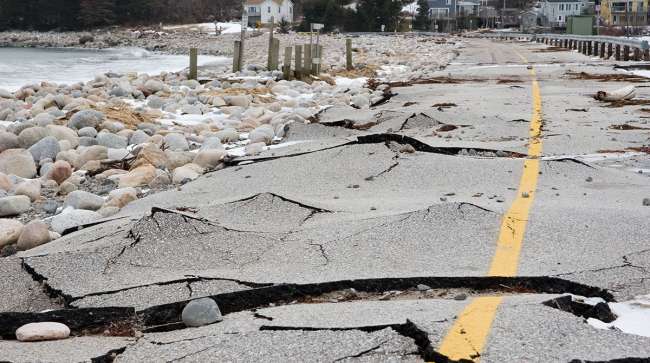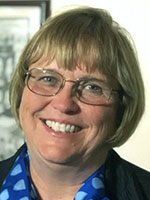Staff Reporter
ASCE: Delivery Systems Key to Infrastructure Projects

[Stay on top of transportation news: Get TTNews in your inbox.]
Delivery systems will determine whether state and local governments successfully implement projects using the $1.2 trillion in federal infrastructure funds, predicts Maria Lehman, president-elect of the American Society of Civil Engineers.
A focus should be on program delivery instead of the traditional project-by-project delivery to avoid supply chain spikes and local governments all bidding on materials and services at the same time, she said.
Lehman has 40 years of experience in the public and private sectors. She was vice president of critical infrastructure for Parsons, chief operating officer and acting executive director of the New York State Thruway Authority and former commissioner of Public Works for Erie County, N.Y.

Lehman
“Delivery systems are the key, but you have to include everybody in the supply chain,” Lehman said. “It’s a real concern because we have not been doing it that way.”
Delivery systems involve the logistics of how people, raw materials, or supplies are transported in projects.
All entities involved in the national effort to spend the $1.2 trillion in federal infrastructure funds in coming years should think differently than in the past about completing the new projects and work together in advance, she said.
“It’s about all the entities coming together to figure this out. How you’re getting the products, how you’re moving it to where it needs to be, how you’re buying it, how you’re implementing it. All of that has to be addressed if you’re going to be more effective and efficient,” Lehman said.
ASCE Roads 2021 by Transport Topics on Scribd
It is important to look for weaknesses in basic delivery systems and seek to understand how projects “might go sideways,” she said.
“You have to sit back and think of the suite of projects you want to do if you are a county, state or city. What is going to be the biggest delay? Why is that delay there? What can suppliers or contractors do differently that is going to take the spikes, the peaks and the valleys out of the delivery?” Lehman noted.
Transportation associations, chambers of commerce, state departments of transportation, metropolitan planning organizations and other groups should determine where funding will come into projects and look for “pinch points in the process” to find creative ways to resolve potential issues before they arise.
“All of these problems are solvable if you sit down and think about how you better address things like supply chain,” Lehman stated. “With most big projects, the biggest challenge is logistics, whether it’s people or materials.”
ASCE Bridges 2021 by Transport Topics on Scribd
Civil engineers, she said, are really system integrators. ASCE, founded in 1852, represents more than 150,000 members of the civil engineering profession in 177 countries.
U.S. Department of Transportation and state DOT officials are considering efficiency and supply chain issues, Lehman said. ASCE recently had a roundtable discussion with Polly Trottenberg, transportation department deputy secretary, and state DOT commissioners to discuss these topics, she added.
“If we’re going to do everything the way we’ve done in the past, there’s going to be incredible problems,” Lehman said. “When you drive your car, you look through the windshield. You don’t drive watching with the rearview mirror. Our industry loves, ‘Well that’s the way we’ve always done it.’ ”
She advised state DOT officials to start preordering materials now that they know they will need to replace or repair roads and bridges instead of having various government agencies nationwide bid for materials at the same time during traditional procurement months.
“They can start signing contracts and having suppliers hold or stockpile materials at today’s cost now, so as inflation goes up, they’re not paying that inflation,” Lehman suggested. “If they have the money in place now while they’re getting their other contracts in place, they can do a bulk quantity contract, which is a lot easier than putting out a set of documents.”
Trucking industry leaders also should look for ways to improve efficiency and “think of all the tools they have in terms of being able to deliver,” she said, adding that workforce development and incentivizing retired baby boomers to return to the workplace are important considerations.
“If you’re not taking in enough drivers, you’re not going to be able to transport. Less drivers means more transportation costs,” Lehman said. “It’s a system of systems. It’s the weak link that makes the whole thing break down.”
Want more news? Listen to today's daily briefing below or go here for more info:




